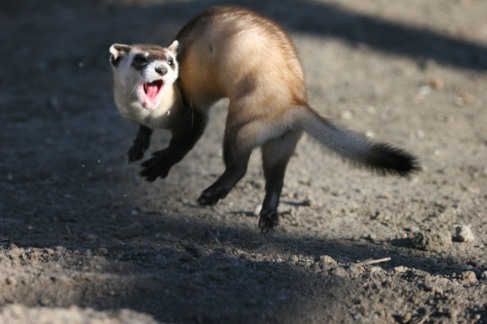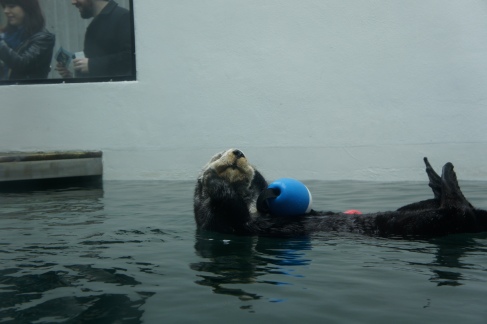Yeah, so when I said I was going to write about ferrets and otters “in the next couple of days” I should have known it would be “the next couple of days in which forms and packing are not consuming my life”. I would say mission accomplished today, except there’s a small stack of papers by my elbow that look suspiciously form-like. HMMMMM.
Anyway, while I decide what to do about my potentially devious paperwork. I promise you otters and by God you lot shall have otters!
Sea otters and river otter belong to a subfamily of Mustelidae called Lutrinae. All thirteen species share a similar brown coloring and highly playful and social nature. They are so damn fun that a group of otters is called a “romp”. Because they do. Romp, that is. Although all otters are social, different species will form different kinds of romps, some separate into romps of females with pups and males, while others will forms random, mixed sex romps. Which sounds a bit more exciting that it probably is. But what do I know, Giant Amazon River Otters do that and they can be up to six or seven feet long (tail included). That’s pretty exciting, right?
Another common feature of Lutrinae, is their dense, highly insulating and unfortunately soft fur. I say “unfortunately” because human demand for otter fur has seriously endangered certain species. Sea otters are one such species, who have not only experienced severe population reduction, but their reduced presence has had an immense impact of marine habitats. This is because sea otters are a keystone species. I don’t mean that they prefer cheap and terrible beer, I mean that they occupy such an important niche in their community (that is, the biotic aspects of a given environment) that anything affecting them affects the entire community. You know that adorable way that otters bash shit open on rocks they set on their stomachs? So cute! Well, besides various mollusks, sea otters love bashing open sea urchins. In turn, sea urchins LOVE kelp (they’re really only able to eat the bottom bit, or the holdfast, though), which form the base of kelp forest communities. Starting to see where this is going? If you don’t, here’s a hint: imagine an animal that eats tree roots (holdfasts are NOT equivalent, they’re an anchor, but you get the idea). Though they only eat the tree’s roots, this cripples the tree and ultimately kills it. This animal is voracious and prolific and can destroy whole forests if unhindered. This does not just affect the trees, but all the plants and animals that live in them and among them. Birds that nest, rodents that burrow under roots, shade-loving plants and more. Without trees they are toast. Thankfully, this tree-ravening animal has a few predators and one of these predators can eat enough of this animal that their impact is minimal. I think you get it now: the tree-killer is the sea urchin and the predator is the sea otter. By reducing sea otter populations, entire kelp forests and their supported communities become vulnerable. As it stands, many forests have been destroyed, with only urchin barrens remaining. While some areas possess other predators able to pick up the slack, others suffer terribly as sea otter populations make their slow recovery. It certainly does not help that the otters need anchored kelp to rest on as part of their habitat.
Moral of the story? Support habitat conservation and reintroduction efforts! Also eat more urchin.
Source
Cogger, Harold G., Joseph Forshaw, Edwin Gould, George McKay and Richard G. Zweifel. 2002. “Carnivores”. Encyclopedia of Animals. Barnes and Noble Books, New York.
Yancey, Paul. “Keystone Species.” Marine Biology. Whitman College. Walla Walla, WA. 5 4 2011. Lecture.
Photo credit, me.


